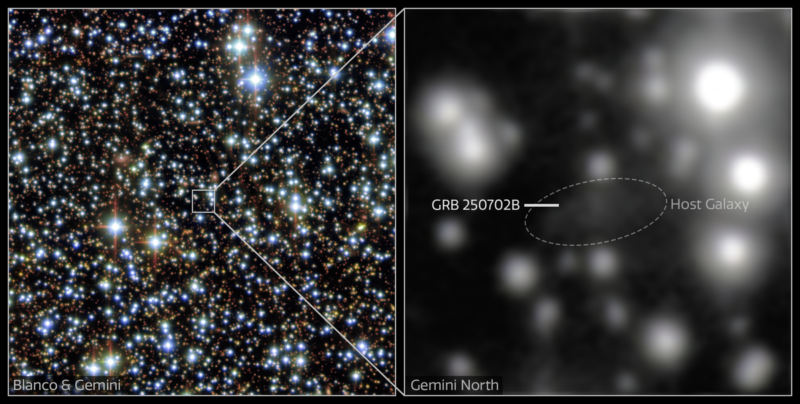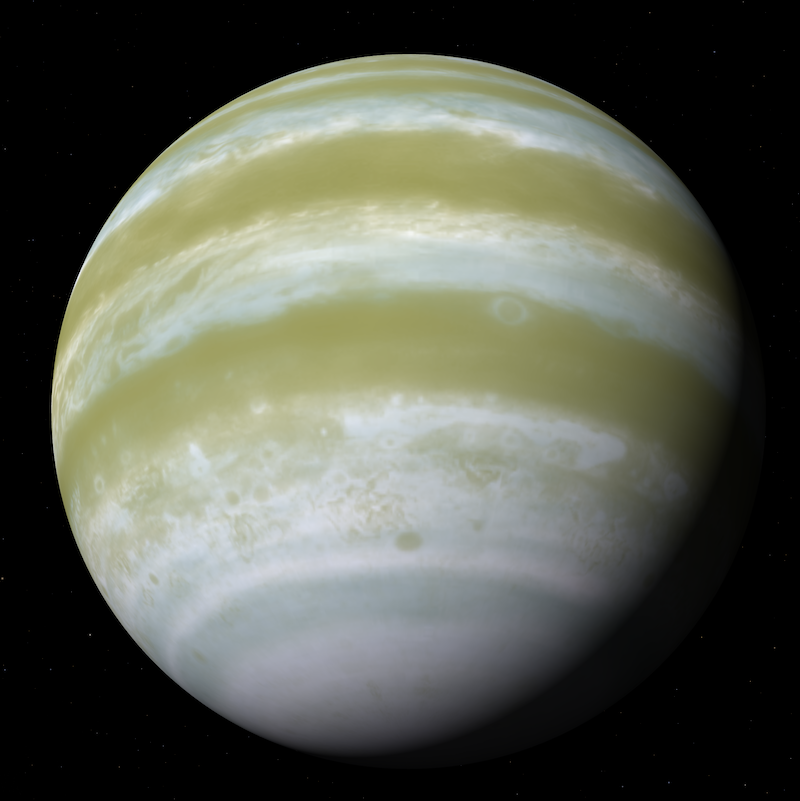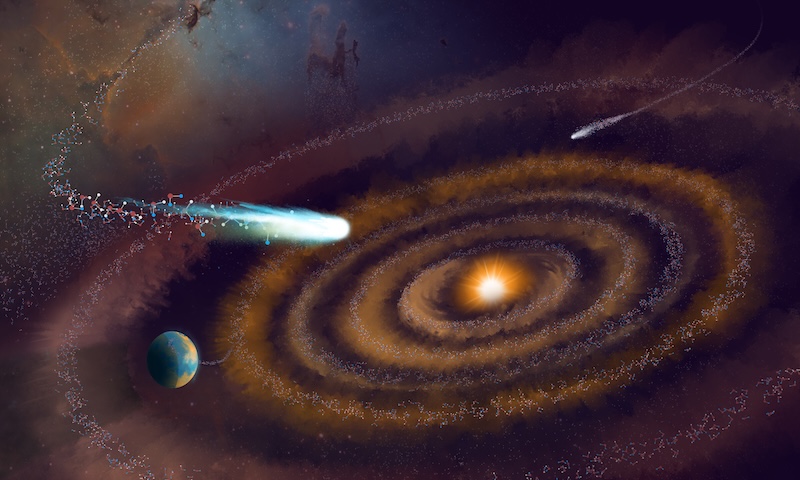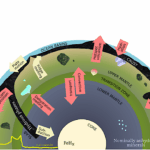Now Reading: This dead star is still shredding its planetary system
-
01
This dead star is still shredding its planetary system
This dead star is still shredding its planetary system
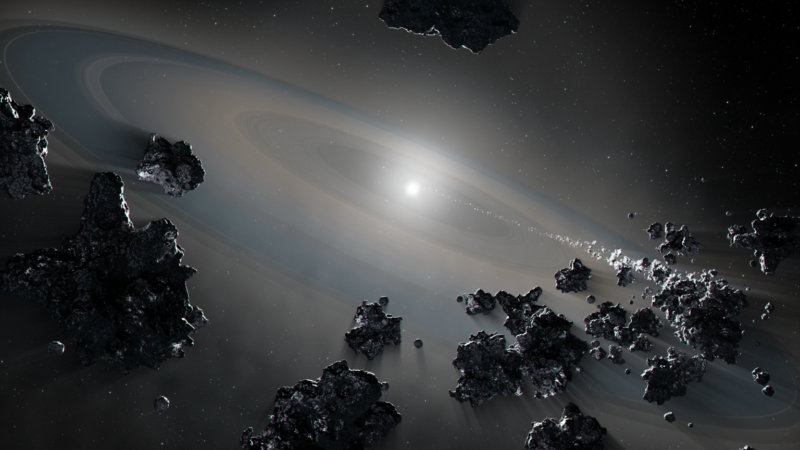
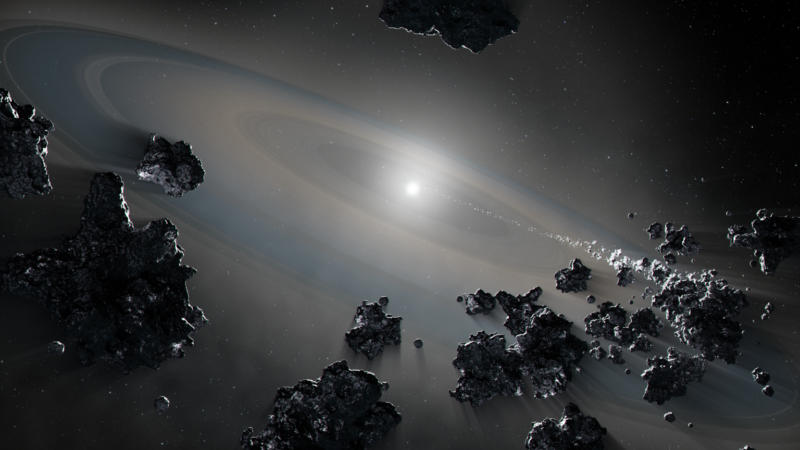
- White dwarf stars are dead stars that have exhausted their fuel supplies and blown their gases off into space.
- Astronomers found a white dwarf where the remains of its planetary system are still actively falling onto the dead star. A heavy metal-rich debris disk surrounds the white dwarf.
- This discovery means the evolution of planetary systems might be different than what we once thought. Because even during the white dwarf stage, it appears planets can still undergo dynamic changes.
The Keck Observatory published this original story on October 22, 2025. Edits by EarthSky.
Dead star is still shredding its planetary system
Astronomers at the Keck Observatory said on October 22, 2025, that they’ve identified a white dwarf star that’s still actively tearing apart its ancient planetary system. A white dwarf is the core of a dead star that has exhausted its fuel supply.
Located 145 light-years from Earth, this white dwarf – named LSPM J0207+3331 – hosts the oldest and most heavy metal-rich debris disk ever observed around a hydrogen-rich white dwarf. And now, this raises new questions about the long-term stability of planetary systems billions of years after stellar death.
Érika Le Bourdais of the Trottier Institute for Research on Exoplanets at Université de Montréal led the study. The Astrophysical Journal published the peer-reviewed study on October 22, 2025.
Planets falling onto a dead star
Le Bourdais said:
This discovery challenges our understanding of planetary system evolution. Ongoing accretion at this stage suggests white dwarfs may also retain planetary remnants still undergoing dynamical changes.
Researchers looked at spectroscopic data from the High-Resolution Echelle Spectrometer (HIRES) instrument on Keck I. The data revealed the white dwarf’s atmosphere is polluted with 13 chemical elements. And those elements provide evidence of a rocky body at least 120 miles (193 kilometers) wide that the star’s gravity tore apart.
Keck Observatory Chief Scientist John O’Meara said:
This is one of the very few times we can see direct evidence of planets being ripped apart and falling onto a dead star. We don’t have many of these systems where we see polluted white dwarfs. This particular system has the largest amount of heavy elements seen to date which proves it was an old, rocky planet.
Hydrogen-rich atmospheres around white dwarfs typically mask such elemental signatures, making this detection especially significant. Co-investigator John Debes of the Space Telescope Science Institute in Baltimore, Maryland, said:
Something clearly disturbed this system long after the star’s death. There’s still a reservoir of material capable of polluting the white dwarf, even after billions of years.
Why the delay?
Nearly half of all polluted white dwarfs show signs of accreting heavy elements. This is an indication their planetary systems have been dynamically disturbed. In the case of LSPM J0207+3331, a recent perturbation – within the last few million years – probably sent a rocky planet spiraling inward. Debes said:
This suggests tidal disruption and accretion mechanisms remain active long after the main-sequence phase of a star’s life. Mass loss during stellar evolution can destabilize orbits, affecting planets, comets and asteroids.
The system may exemplify delayed instability. Basically, this delay is where multi-planet interactions gradually destabilize orbits over billions of years. Debes added:
This could point to long-term dynamical processes we don’t yet fully understand.
Searching for outer planets
Now, astronomers are investigating what might have triggered the disruption. Surviving Jupiter-sized planets could be responsible. But they are difficult to detect however, due to their separation from the white dwarf and low temperatures. Data from the European Space Agency’s Gaia space telescope might be sensitive enough to detect such planets through their gravitational influence on the white dwarf.
NASA’s James Webb Space Telescope could also provide insights by taking infrared observations of the system for signs of outer planets. Debes said:
Future observations may help distinguish between a planetary shakeup or the gravitational effect of a stellar close encounter with the white dwarf.
Bottom line: Astronomers have discovered a dead star is still shredding the remains of its ancient planetary system. The metallic debris is spiraling onto the white dwarf star.
The post This dead star is still shredding its planetary system first appeared on EarthSky.
Stay Informed With the Latest & Most Important News
Previous Post
Next Post
-
 012024 in Review: Highlights from NASA in Silicon Valley
012024 in Review: Highlights from NASA in Silicon Valley -
 02Panasonic Leica Summilux DG 15mm f/1.7 ASPH review
02Panasonic Leica Summilux DG 15mm f/1.7 ASPH review -
 03From Polymerization-Enabled Folding and Assembly to Chemical Evolution: Key Processes for Emergence of Functional Polymers in the Origin of Life
03From Polymerization-Enabled Folding and Assembly to Chemical Evolution: Key Processes for Emergence of Functional Polymers in the Origin of Life -
 04How New NASA, India Earth Satellite NISAR Will See Earth
04How New NASA, India Earth Satellite NISAR Will See Earth -
 05And Thus Begins A New Year For Life On Earth
05And Thus Begins A New Year For Life On Earth -
 06Astronomy Activation Ambassadors: A New Era
06Astronomy Activation Ambassadors: A New Era -
07SpaceX launch surge helps set new global launch record in 2024













